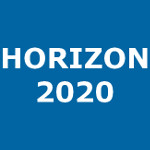A new 3d finite element-based approach for computing cell surface tractions assuming nonlinear conditions
Hervás Raluy, Silvia (Universidad de Zaragoza) ; Gómez Benito, María José (Universidad de Zaragoza) ; Borau Zamora, Carlos (Universidad de Zaragoza) ; Condor, Mar ; García Aznar, José Manuel (Universidad de Zaragoza)
Resumen: Advances in methods for determining the forces exerted by cells while they migrate are essential for attempting to understand important pathological processes, such as cancer or angiogenesis, among others. Precise data from three-dimensional conditions are both difficult to obtain and manipulate. For this purpose, it is critical to develop workflows in which the experiments are closely linked to the subsequent computational postprocessing. The work presented here starts from a traction force microscopy (TFM) experiment carried out on microfluidic chips, and this experiment is automatically joined to an inverse problem solver that allows us to extract the traction forces exerted by the cell from the displacements of fluorescent beads embedded in the extracellular matrix (ECM). Therefore, both the reconstruction of the cell geometry and the recovery of the ECM displacements are used to generate the inputs for the resolution of the inverse problem. The inverse problem is solved iteratively by using the finite element method under the hypothesis of finite deformations and nonlinear material formulation. Finally, after mathematical postprocessing is performed, the traction forces on the surface of the cell in the undeformed configuration are obtained. Therefore, in this work, we demonstrate the robustness of our computational-based methodology by testing it under different conditions in an extreme theoretical load problem and then by applying it to a real case based on experimental results. In summary, we have developed a new procedure that adds value to existing methodologies for solving inverse problems in 3D, mainly by allowing for large deformations and not being restricted to any particular material formulation. In addition, it automatically bridges the gap between experimental images and mechanical computations.
Idioma: Inglés
DOI: 10.1371/journal.pone.0249018
Año: 2021
Publicado en: PLoS ONE 16, 4 (2021), e0249018 [19 pp.]
ISSN: 1932-6203
Factor impacto JCR: 3.752 (2021)
Categ. JCR: MULTIDISCIPLINARY SCIENCES rank: 29 / 74 = 0.392 (2021) - Q2 - T2
Factor impacto SCIMAGO: 0.852 - Multidisciplinary (Q1)
Financiación: info:eu-repo/grantAgreement/EC/H2020/737543/EU/Image Analysis Online Services for in-vitro experiments/IMAGO
Financiación: info:eu-repo/grantAgreement/ES/MICINN/RTI2018-094494-B-C21
Tipo y forma: Artículo (Versión definitiva)
Área (Departamento): Área Mec.Med.Cont. y Teor.Est. (Dpto. Ingeniería Mecánica)
 Debe reconocer adecuadamente la autoría, proporcionar un enlace a la licencia e indicar si se han realizado cambios. Puede hacerlo de cualquier manera razonable, pero no de una manera que sugiera que tiene el apoyo del licenciador o lo recibe por el uso que hace.
Debe reconocer adecuadamente la autoría, proporcionar un enlace a la licencia e indicar si se han realizado cambios. Puede hacerlo de cualquier manera razonable, pero no de una manera que sugiera que tiene el apoyo del licenciador o lo recibe por el uso que hace.
Exportado de SIDERAL (2023-05-18-15:13:46)
Visitas y descargas
Idioma: Inglés
DOI: 10.1371/journal.pone.0249018
Año: 2021
Publicado en: PLoS ONE 16, 4 (2021), e0249018 [19 pp.]
ISSN: 1932-6203
Factor impacto JCR: 3.752 (2021)
Categ. JCR: MULTIDISCIPLINARY SCIENCES rank: 29 / 74 = 0.392 (2021) - Q2 - T2
Factor impacto SCIMAGO: 0.852 - Multidisciplinary (Q1)
Financiación: info:eu-repo/grantAgreement/EC/H2020/737543/EU/Image Analysis Online Services for in-vitro experiments/IMAGO
Financiación: info:eu-repo/grantAgreement/ES/MICINN/RTI2018-094494-B-C21
Tipo y forma: Artículo (Versión definitiva)
Área (Departamento): Área Mec.Med.Cont. y Teor.Est. (Dpto. Ingeniería Mecánica)
Exportado de SIDERAL (2023-05-18-15:13:46)
Enlace permanente:
Visitas y descargas
Este artículo se encuentra en las siguientes colecciones:
Artículos > Artículos por área > Mec. de Medios Contínuos y Teor. de Estructuras
Registro creado el 2021-11-22, última modificación el 2023-05-19
